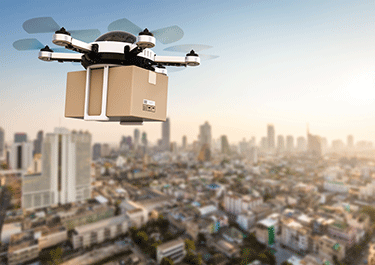 As I reflected on my recent participation at the InterDrone event in Vegas, I was surprised that it had only been in existence for three years. The sessions and exhibition hall were packed, and everyone was friendly and energized. But beyond the many exhibitors, panels and sessions, I found some key learning points about the drone industry, namely:
As I reflected on my recent participation at the InterDrone event in Vegas, I was surprised that it had only been in existence for three years. The sessions and exhibition hall were packed, and everyone was friendly and energized. But beyond the many exhibitors, panels and sessions, I found some key learning points about the drone industry, namely:
- It’s still the wild, wild west. Companies in the drone space lack industry best practice standards, education, research, advocacy and certifications – all things CompTIA can help with.
- Like the tech industry, companies in the drone space are focused on software applications and data analytics as a way to provide value to the end-client. Automating operations, workflow, prescriptive analytics and extraction of data is the primary goal of drone technology. It’s all about the software!
- Drones’ reception by both private and public industry has been exceptional, from vertical market applications in agriculture, construction, real estate and resorts to the work being done with first responders and the military, the list goes on.
- There is a need in the drone industry to better coordinate hardware and software to make drones more intelligent, cheaper, faster, easier and safer to deploy.
- End-users need more education on use cases and application of this technology for widespread adoption and I believe technology service providers can provide drone services to many of their existing clients through partnerships with flight service providers.
FAA regulations for the drone industry are a major focus. Some of these regulations deal with the aircraft itself, the distance they can travel, their ability to avoid obstacles, and their air worthiness, which are based on standards that haven’t even been developed yet! There is so much training that needs to take place and questions arose on how the training will be tracked? Some claim that the FAA is not keeping pace with international regulations already underway. One thing was abundantly clear – there is a major need for pre-flight and flight assessments.
Having the ability to be certified beyond visual line of sight (BVLOS) is yet another hurdle and many believe it will be a long time coming. To have this flexibility, drones need to be able to fly higher, further and longer to enable BVLOS. Additionally, the need for ground-based sense and control systems and radar to track individual drones is a costly endeavor, estimated at $3 million for a single craft from one vendor. It’s still too early to tell if BVLOS will be delivered directly by the manufacturers or through flight service providers. This type of certification is required for distance projects, like assessing a pipeline or railroad for example. The FAA has developed Part 107 certification, however it’s not enough and will require new certifications to address safety and security challenges.
The drone industry is ripe for collaboration with the technology industry and the creation of CompTIA’s first ever Drone Advisory Council will provide the thought leadership and expertise to allow us to help drive awareness and adoption of drone technology into mainstream SMB.
